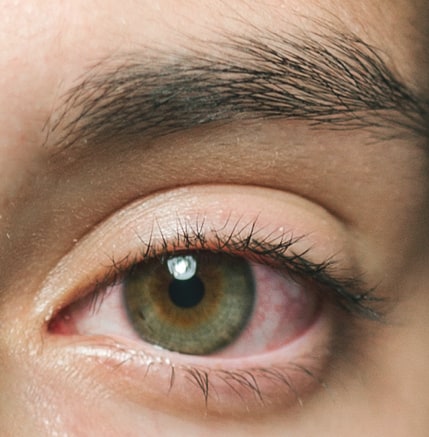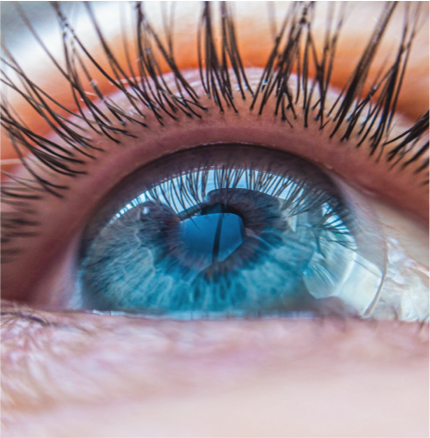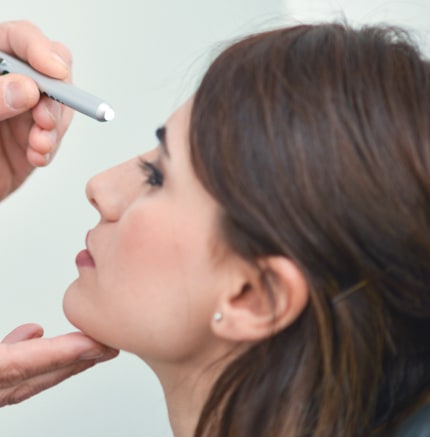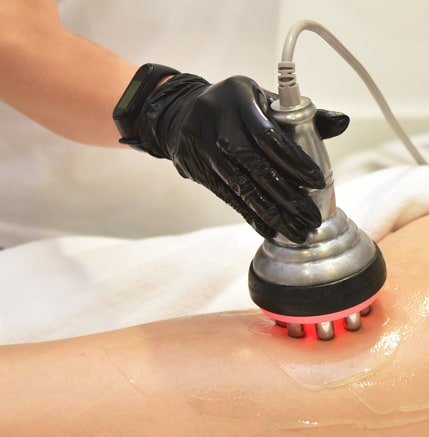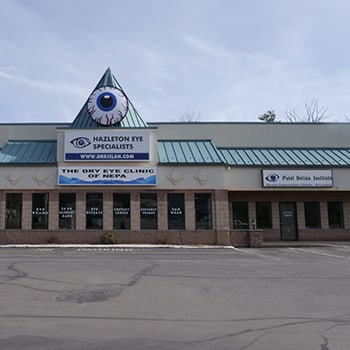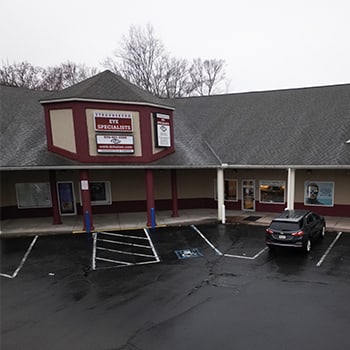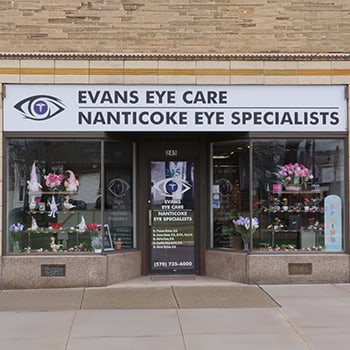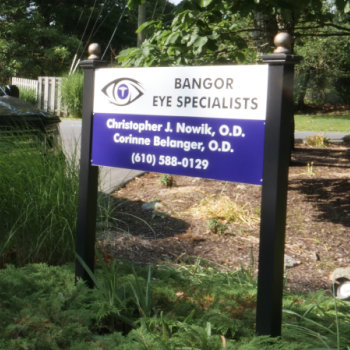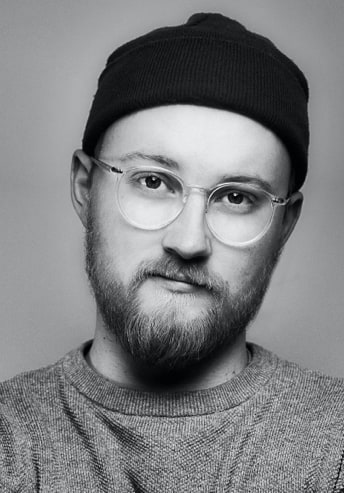Life can be challenging when your vision doesn’t develop properly. But imagine there was a way to improve your visual skills without surgery or glasses—a non-invasive treatment designed to train your eyes and brain to properly work together.
That’s vision therapy, a treatment aiming to teach you to efficiently use your visual system. Through a customized series of uniquely tailored exercises, you can train the skills needed for effective vision in your everyday life. It’s an incredible investment in improving your vision.
What is Vision Therapy For?
Your visual system doesn’t just make up your eyes. There are tiny muscles used for focusing and controlling eye movement, your optic nerve, your brain, and more. These are all extremely important, and for you to see, these parts need to work together in harmony.
As you grow, you naturally develop the skills needed to coordinate these parts in unison. However, they sometimes may not develop properly; some muscles may not fully develop or your brain might not be able to process the information it receives. And for adults, a brain injury or medical condition can affect how well these systems work together.
This can be more problematic than you think, as it makes it much more difficult for you to perceive the world around you. This is what vision therapy is for—it’s a non-invasive way to train the eyes and brain to properly coordinate all of these tiny parts to give you comfortable, clear vision without advanced surgery or complex solutions.
What Conditions Can Vision Therapy Treat?
Vision therapy is ideal for dealing with a wide range of vision problems. It can help with conditions such as:
- Amblyopia
- Strabismus
- Binocular vision dysfunction
- Concussions
These conditions are all well-known for how they affect your visual system.
Amblyopia
Amblyopia, more commonly known as “lazy eye,” occurs when one eye develops weaker than the other. The brain begins ignoring signals from the weaker eye and prioritizes the stronger eye. This can quickly lead to:
- Blurry vision in one eye
- Difficulty with depth perception
- Squinting or tilting the head to see better
- One eye beginning to wander or aim in different directions
This can quickly make daily activities more difficult as your depth perception worsens. Fortunately, vision therapy can help by exercising the muscles in the weaker eye. This improves your overall vision and coordination to improve your overall quality of life.
Strabismus
To see clearly and have accurate depth perception, your eyes need to coordinate and aim simultaneously at an object. Strabismus, easily recognizable as crossed eyes, develops when the eyes don’t properly align with one another, leading to a significant problem with depth perception.
This can lead to:
- Double vision or blurred vision
- Difficulty with depth perception
- Eye strain or discomfort
- Holding the head at an unusual angle to focus
Vision therapy can help here. Through targeted exercises, you can train your eyes and brain to better use the muscles needed to focus your eyes. This can improve both the function and overall appearance of your eyes.
Concussion
Concussions can develop after any impact to the head that jolts the brain, and after experiencing one, vision problems are more common than you might think. The symptoms of a concussion include:
- Blurred or double vision
- Difficulty focusing on objects
- Sensitivity to light
- Trouble with depth perception
- Eye strain or discomfort
- Decreased balance or coordination
Fortunately, vision therapy can help. This helps to retrain your brain to properly coordinate your eyes and interpret visual information, leading to reduced symptoms.
What to Expect from Vision Therapy
The journey to vision therapy begins with a comprehensive eye exam with your optometrist. During this exam, they’ll test your different visual skills to determine where you can improve. Then, they’ll create a customized treatment plan designed to train and improve these skills to give you better vision.
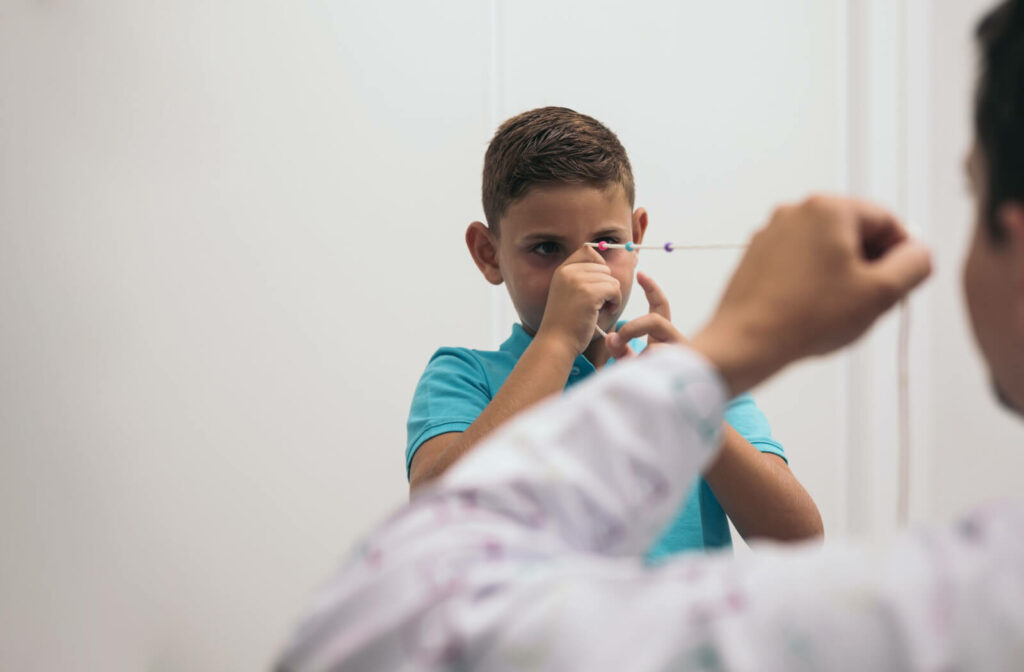
Throughout your treatment, you can expect to work through:
- Eye tracking exercises: These help improve your ability to follow moving objects smoothly with your eyes, enhancing coordination and focus.
- Saccadic exercises: Designed to develop quick eye movements and the ability to shift focus between different points swiftly.
- Pencil push-ups: This exercise involves bringing a pencil or similar object gradually closer to your nose while maintaining clear focus, which strengthens convergence skills.
- Brock string exercises: A string with three colored beads can help improve depth perception and eye alignment while focusing on objects at varying distances.
- Visual memory games: Activities that improve the brain’s ability to retain visual information, such as matching games or recalling sequences of images.
- Binocular vision activities: Exercises that promote coordination between the two eyes, which are necessary for comfortable and efficient vision.
These exercises can challenge and improve your visual skills, eventually leading to improved vision and overall quality of life. Throughout your treatment, your optometrist can make any necessary adjustments to continue improving your vision in a way that meets your unique needs.
Learn More About Vision Therapy
If you or your child are struggling with visual issues, it’s time to take action—and vision therapy may be the answer you’ve been looking for. To learn more about how vision therapy can improve your vision and quality of life, come see our team at Hazleton, Stroudsburg, Nanticoke & Bangor Eye Specialists. Book your appointment today, and get ready to see the difference vision therapy can make.



